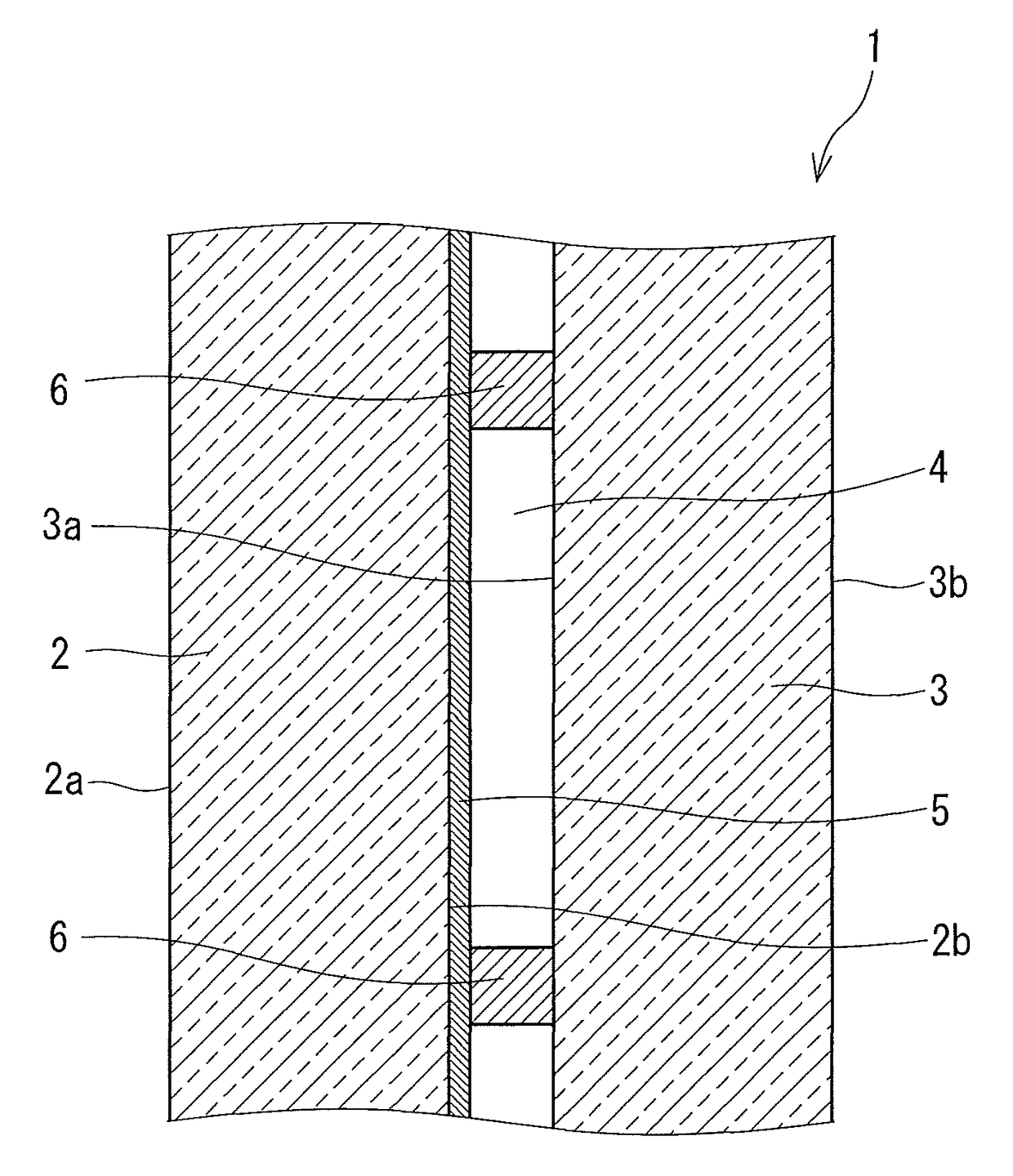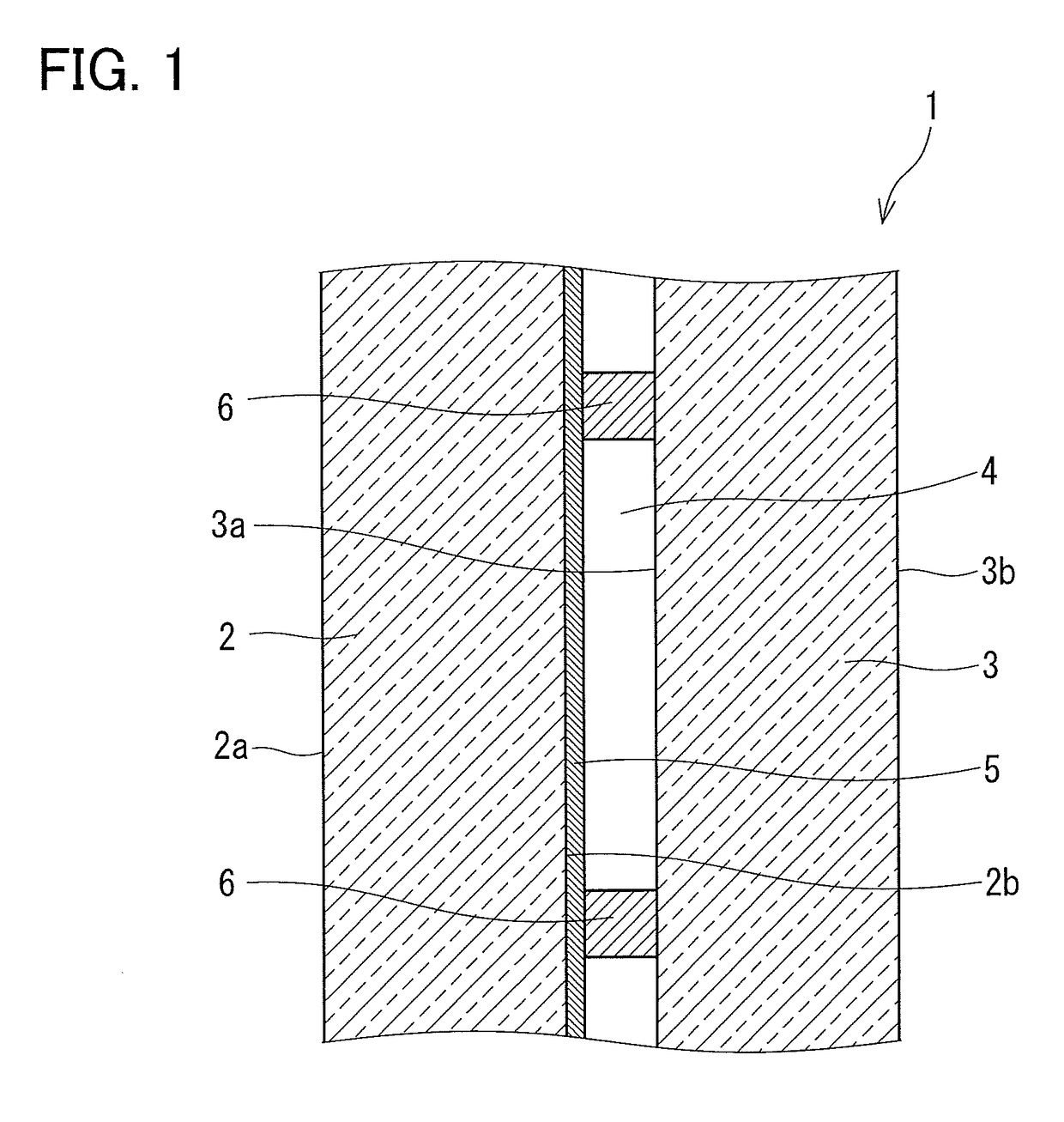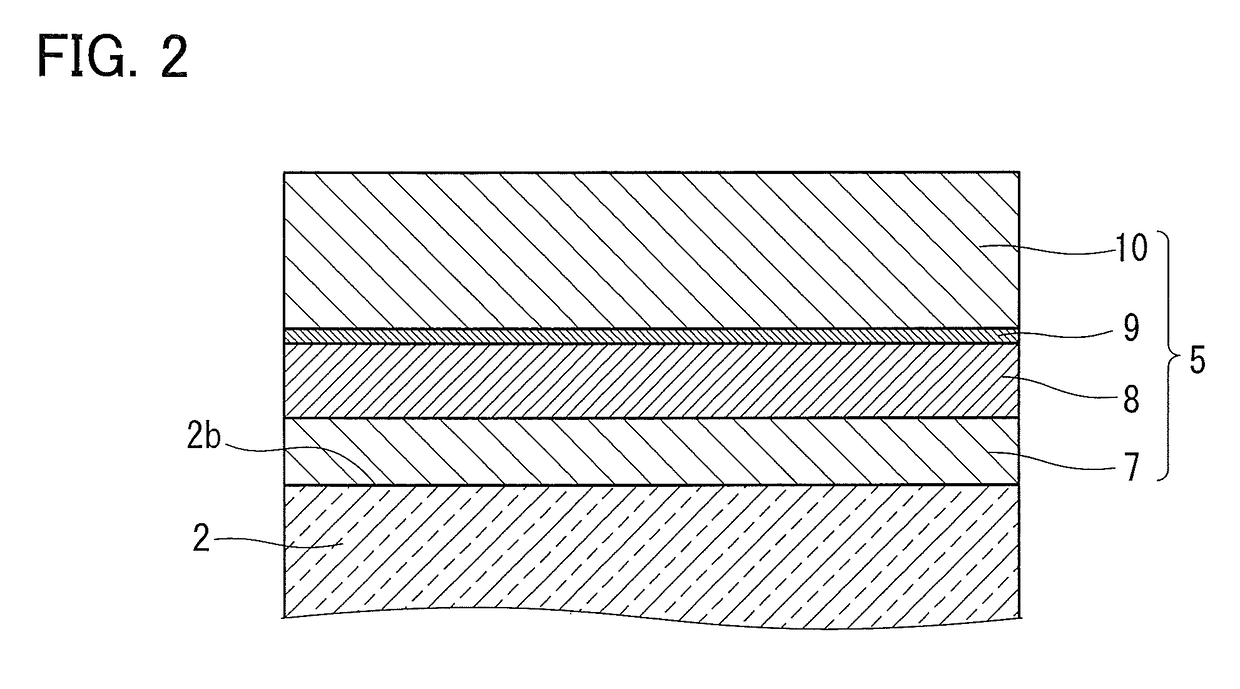Reduced pressure double glazed glass panel
a reduced pressure technology, applied in climate change adaptation, building components, construction, etc., can solve the problems of large thickness of the entire double glazed glass panel, unsuitable for use in the window frame of residential houses, so as to increase the cooling efficiency in summer and increase the heating efficiency in winter.
- Summary
- Abstract
- Description
- Claims
- Application Information
AI Technical Summary
Benefits of technology
Problems solved by technology
Method used
Image
Examples
example 1
[0039]A 3.1 mm-thick outside glass sheet 2 on which a Low-E film 5 was formed was cut into a predetermined size, and a 3.1 mm-thick float glass sheet was prepared as an inside glass sheet 3. Stainless steel cylindrical spacers 6 with a diameter of 0.5 mm and a height of 0.2 mm were inserted between the pair of the outside glass sheet 2 and the inside glass sheet 3, these outside glass sheet 2 and the inside glass sheet 3 were sealed all along the peripheries thereof with a low melting glass to form a gap portion 4 therebetween, and then the gap portion 4 was evacuated to reduce the pressure therein. Thus, a reduced pressure double glazed glass panel 1 was obtained.
[0040]The Low-E film 5 was formed on the second surface 2b of the outside glass sheet 2 by reactive sputtering. The Low-E film 5 was formed by stacking a lower dielectric layer 7, a metal layer 8, a sacrifice layer 9, and an upper dielectric layer 10, each composed of a material shown in Table 1 and having a thickness show...
examples 2 to 15
[0046]In Examples 2 to 15, the reduced pressure double glazed glass panels 1 were produced in the same manner as in Example 1. As shown in Table 1, in Examples 2 to 15, the layered structures of the lower dielectric layer 7, the metal layer 8, the sacrifice layer 9, and the upper dielectric layer 10, the materials of these layers, and the thicknesses thereof were varied from those of Example 1. In Examples 2 to 15, the reduced pressure double glazed glass panels 1 were evaluated in the same manner as in Example 1. Table 2 shows the evaluation results. In Examples 2 to 17, the following relations hold: ∈≦0.067; 31≦RG(solar)≦40; (48−RG(solar))≦AG(solar)≦17; T(solar)≦52; AG(solar)≦{17.3−(0.07×RG(solar))+(20×∈)}; AF(vis)≦12; AF(400)≦14; SHGC≦0.50; and U value≦1.2. Here, since the above relations hold, the temperature difference ΔT between the outside glass sheet 2 and the inside glass sheet 3 is as small as 12.5° C. or less and thus the degree of bending is also low. Furthermore, in Exa...
example 16
[0047]In Example 16, the reduced pressure double glazed glass panel 1 was produced in the same manner as in Example 1. As shown in Table 1, in Example 16, the layered structures of the lower dielectric layer 7, the metal layer 8, the sacrifice layer 9, and the upper dielectric layer 10, the materials of these layers, and the thicknesses thereof were varied from those of Example 1.
[0048]Furthermore, in Example 16, a low-maintenance coating (see paragraph 0021 of JP 2008-505842 T) as a functional film that does not affect the optical properties of the outside glass sheet 2 on which the Low-E film 5 is formed was formed on the first surface 2a of the outside glass sheet 2. In Example 16, the low-maintenance coating is a layer formed by stacking a silicon oxide (SiO2) layer and a titanium oxide (TiO2) layer in this order. The thickness of the SiO2 layer is 9 nm, and the thickness of the TiO2 layer is 4 nm. This means that the thickness of the SiO2 layer is within a range of 5 nm or more...
PUM
 Login to View More
Login to View More Abstract
Description
Claims
Application Information
 Login to View More
Login to View More - R&D
- Intellectual Property
- Life Sciences
- Materials
- Tech Scout
- Unparalleled Data Quality
- Higher Quality Content
- 60% Fewer Hallucinations
Browse by: Latest US Patents, China's latest patents, Technical Efficacy Thesaurus, Application Domain, Technology Topic, Popular Technical Reports.
© 2025 PatSnap. All rights reserved.Legal|Privacy policy|Modern Slavery Act Transparency Statement|Sitemap|About US| Contact US: help@patsnap.com



